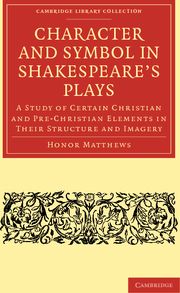 Character and Symbol in Shakespeare's Plays
Character and Symbol in Shakespeare's Plays Summary
The purpose of this book is to offer to the reader a thread which may lead him to a finer appreciation of one pattern discernible in the complexity of Shakespeare's created world. It is the pattern formed by the concepts of sin, judgment and redemption. Throughout the plays there ring, for all who care to listen, echoes from the culture which was their author's inheritance, and the importance of these echoes must inevitably be differently assessed by readers for whom their sound is clear or faint. It is the belief of the writer that some very simple and even obvious reminders of the sources of such resonances will attune the reader's ear to a music which is a significant part of the plays' content, and such reminders therefore precede the consideration of the selected themes in Shakespeare's own work. If this study helps any lover of the plays to be more vitally aware of the stuff of which such masterpieces are actually made and therefore to enjoy them more acutely, the writer's purpose will have been achieved.
The threefold pattern to which the reader's attention is invited is, of course, clearly laid down in the teaching of the Christian Church and formed the raw material of a powerful drama on the medieval stage. Miracle and morality plays were acted until the last decade of the sixteenth century, and Elizabethan audiences were the direct inheritors of a drama which reflected the principal ideas and values of a unified view of life. Basic elements in their outlook were their conception of man's place in a divinely created universe and of his ability to know and to choose between good and evil.
- Type
- Chapter
- Information
- Character and Symbol in Shakespeare's PlaysA Study of Certain Christian and Pre-Christian Elements in Their Structure and Imagery, pp. 1 - 4Publisher: Cambridge University PressPrint publication year: 2009First published in: 1962
